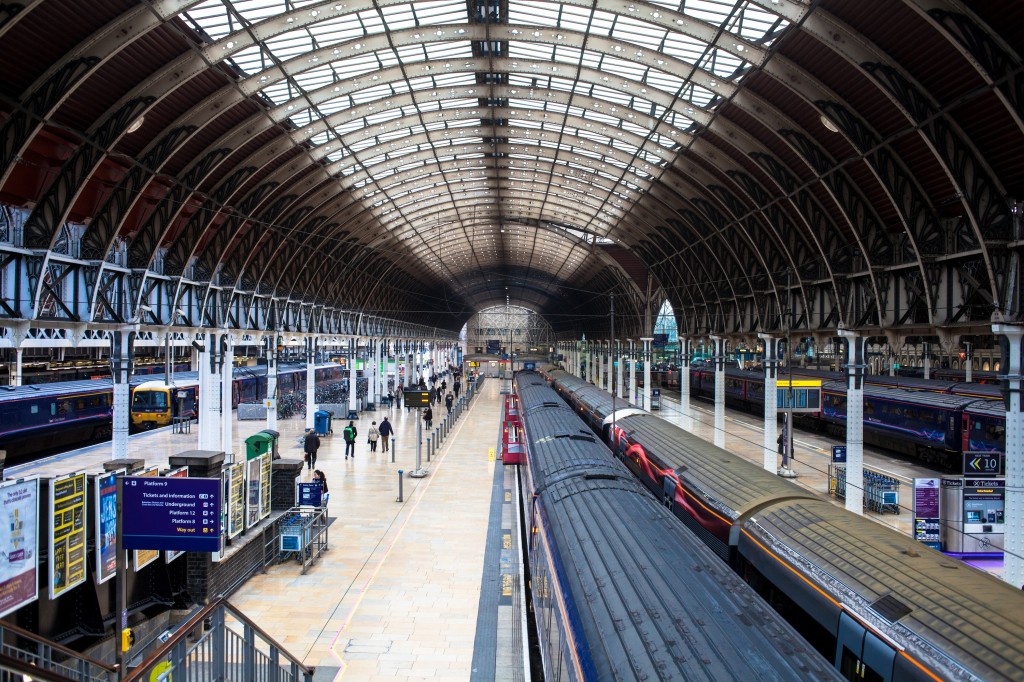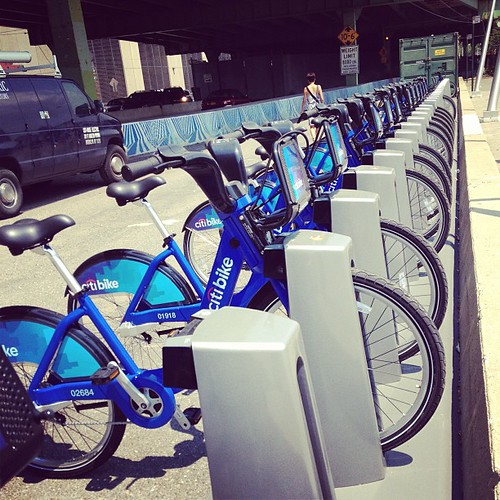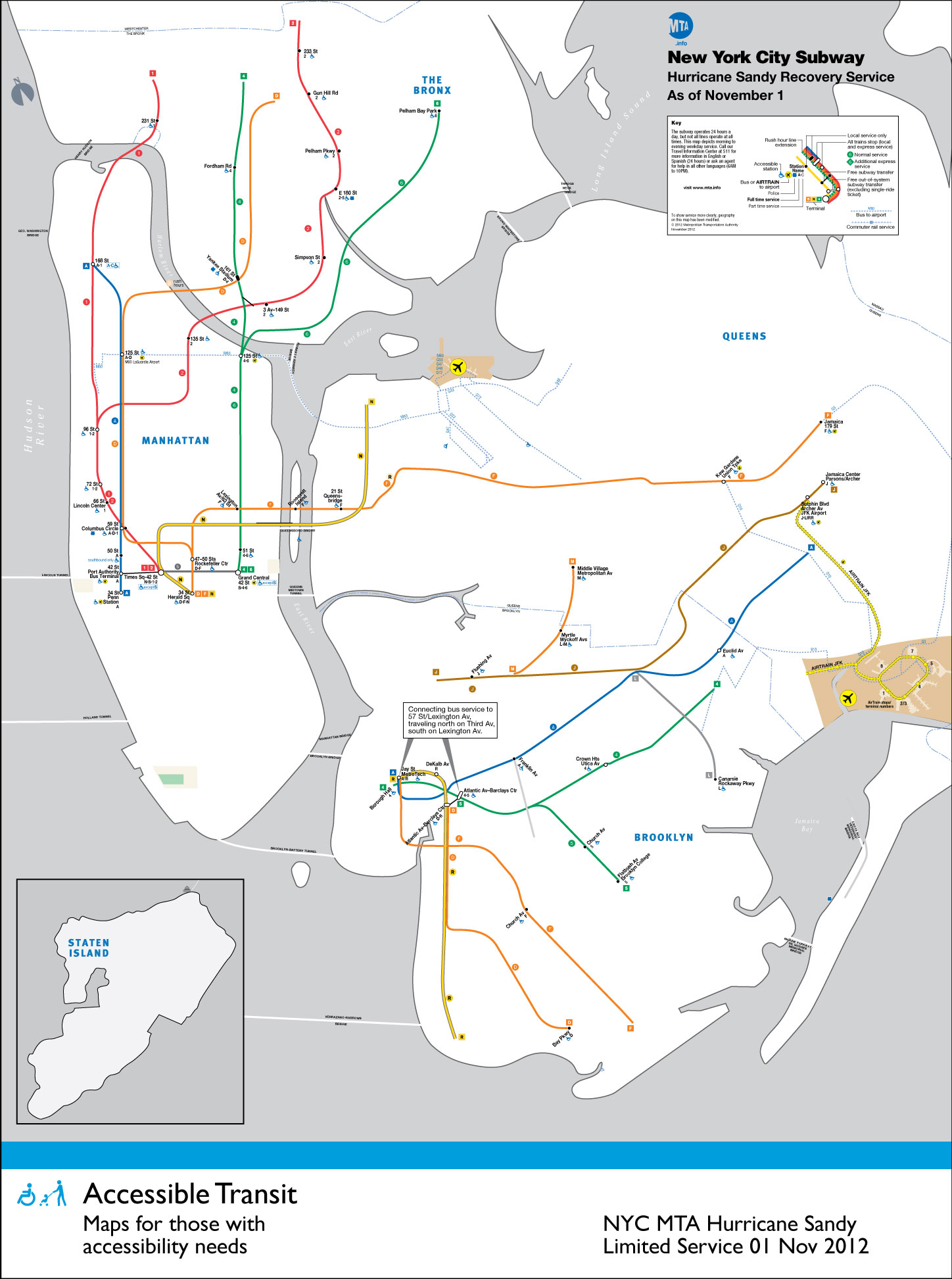Tag: transportation
Should the Port Authority Be Split Up? Of course not.
Citing “a history of conflict between these folks at the Port Authority,” Christie said that the way to resolve the feud between the states was “taking the Hatfields and McCoys and moving them to separate homes. Because they haven’t been able to get along with each other, despite my best efforts, the best efforts of Governor Cuomo, and many of our predecessors.”
via Should the Port Authority Be Split Up? – WNYC
This is ridiculous.
This article even points out that, Christie has blocked reform at the Port, while staffing it with political appointees who had no transportation experience.
So, Governor Christie wrecks the car by putting a political crony at the helm, then has the gaul to complain that the Port Authority is poorly run. This is reaching peak chutzpah.
Of course the Port Authority should be run better – so stop having the two Governors pick the Chairman and CEO’s and have a professional talent search pick the best and brightest leaders with a transit and transportation background.
A breakup would have a catastrophic affect on the tri-state, with redundancy upon redundancy created. This is exactly why Metro North, Long Island Rail Road and NJ Transit are more inefficient than if all three were combined under one railroad.
The Continuing US Bikeshare Saga
For those not keeping score at home, here is the situation on the US urban bikeshare situation:
Alta Bicycle Share is the Portland, OR company who is the overall contractor which runs bike share systems in Columbus, OH, Chattanooga, the Bay Area, Boston, Washington DC, Chicago, and the largest, New York City. They used technology from the Montreal-based integrator Bixi (also known as the Public Bike System Company) which has filed for Canada’s version of Chapter 11 bankruptcy protection. Forbes has a good rundown on the 5 Big Debts In The Bixi Bike Sharing Bankruptcy, but a primary contributing factor to Bixi’s woes are that they had ditched their long-standing software partner 8D Technologies.
In February Alta and 8D announced that they would be working as a joint venture, effectively cutting Bixi out of the loop: Bixi’s former partners become key competitors:
Under the deal announced Monday, 8D will provide software, electronics and docking stations, while Alta will operate the systems. They have not decided which bikes to use, 8D CEO Isabelle Bettez said in an interview.
She said 8D will consider making an offer to buy Bixi’s operations.
“We expressed an interest two years ago, but we were shut out of the process,” Bettez said, noting Bixi chose which companies were allowed to bid.
And just the other day Montreal – who effectively owns Bixi now as a ward of the City – stated that Offers for Bixi’s international arm not satisfactory:
The city of Montreal has admitted efforts to sell Bixi’s international arm are not going well. Four serious bids were submitted, none of which were satisfactory, Pierre Desrochers, chairman of Montreal’s executive committee, told reporters Monday.
He did not provide the names of bidders or the value of the proposals but said the terms offered did not meet the minimum requirements. In one case, it would have taken the city 75 years to get its money back.
Saddled with $46 million in debt, Bixi has been under bankruptcy protection since January.
It would make complete sense if Alta and 8D could buy the beleaguered Bixi, as long as the overhanging debt was renegotiated with their creditors. Per the Forbes article, Bixi has the following debt:
$38m Montreal
$11.0m Alta
$5.3m NYC & Chicago for late delivery
54.3m in debt
At what point should Montreal take a haircut and equity in any new Alta/8D joint venture? I would venture soon enough, if they continue to not get bids. This is what is always a hazard in direct public-owned ventures: it is hard for politicians to say “we are not going to make our money back, let’s close shop and make the best of the situation.” Say what you want about entities such as the Port Authority (which has been degraded by Gov Christies appointees) or the Empire State Development Fund (which sometimes acts as a funnel to developers), but they are as many steps away from the public trust so they can be a bit more nimble.
Just today, the Citi Bike Manager Resigned:
Justin Ginsburgh, the manager of the beleaguered bike share program, has resigned, officials confirmed Wednesday.
Ginsburgh, 33, has decided to become a special adviser to Peter Lehrer, the principal of Lehrer LLC, a firm that manages large construction projects.
As The News reported Monday, the company operating the Citi Bikes, Bike Share NYC, has repeatedly failed to meet several monthly performance standards in its contract with the city.
And The Wall Street Journal reported that the program was losing money and was seeking to raise tens of millions of dollars to stay in business.
Mayor de Blasio has ruled out a city bailout, but it is possible the city might allow the operator to raise its fees, including the $95 cost of an annual membership.
This is probably for the best, as a better-run Alta is required, but the city needs to get behind bike sharing as another mode of transportation. If they are willing to subsidize ferry trips to the tune of $2.5 million annually for 3,500 daily riders, why not something similar for bike share which just yesterday 13,906 people used the bikes on one of the coldest days of the week (it was in the 30’s with a Nor-Easter wind) and the year-to-date average is 10,837 riders. In winter. In this winter.
Investing in different ways for people to get where they are going is very much a public good. Investing and maintaining our roads, sidewalks, subways, rail, ferries, taxi & limousine, and bikes creates a choice network. This network allows people the opportunity to customize their journey amongst different modes. This fundamentally increases all of our personal liberty.
A full-scale VIA train car in a guy’s basement
Landings at San Diego Airport
Creating a Balloonlike Plug to Hold Back Floodwaters
Into the vault: the operation to rescue Manhattan’s drowned internet
Miles of copper is ruined not only in the cable vault at Broad Street, but also at 20 or so manholes around the area. Even worse, paper insulation in the copper wiring sucks water through the cabling from capillary action, destroying cabling even in dry areas. Levendos says it’s “far too tedious, time consuming, and not effective of a process to try and put this infrastructure back together,” so Verizon’s taking the opportunity to rewire with fiber optics instead. Service has been restored to FiOS customers for over a week — unlike copper, fiber optics aren’t damaged by the water. As part of this process, crews have already pulled fiber up the major corridors — including Water, Broad, and Pearl Streets — to ultimately connect the fiber network to buildings.
Into the vault: the operation to rescue Manhattan's drowned internet | The Verge.
Dumb Ways to Die – by the Melbourne Metro Trains
Melbourne Metro Trains has released a new ad campaign about train safety with perhaps the cutest video about death I’ve ever seen:
A three-minute animated music video, written by McCann ECD John Mescall, is the centre piece of the campaign. The video highlights the many dumb ways there are to die, with being hit by a train – a very preventable death – among them.
Mescall said: “We’ve got people eating superglue, sticking forks in toasters and selling both their kidneys. But truth is indeed stranger than fiction, and we still couldn’t come up with dumber ways to die than driving around boomgates and all the other things people do to put themselves in harm’s way around trains. The aim of this campaign is to engage an audience that really doesn’t want to hear any kind of safety message – and we think dumb ways to die will.”
Accessible Transit – NYC Subway Hurricane Sandy Service
With the extensive damage wrought by Hurricane Sandy on the Northeast it is unsurprising that the New York Subway has been especially hard hit. Many of the underground river crossings were fully flooded, but luckily most of the rolling stock has been spared and all of the large capital projects (East Side Access, 7th Line extension, and the Second Avenue Subway) have received little to no damage.
What hasn’t been spared are people’s commute – which has been brutal due to the lack of power below 34th Street. This means that even if all cross river tunnels were dry and open for operation there would be no service due to power loss. Below is the Accessible Transit map for the New York City Subway during partial shutdown. This is the sixth installment of my Accessible Transit Map series – an unofficial map, not sanctioned by the MTA or NYCTA. As in previous maps, I have removed all stations which are not handicapped accessible.
Maps represent corporeal objects, through convenient fictions; a representation which works for a majority of its users. But where are the maps for the disabled or those require additional accessibility? Wouldn’t the mother with newborn in stroller need a different map then those without the need to lug all the accoutrement’s of childhood? Equally, those in a wheelchair require a map different then one which the walking can use. I decided to rectify the situation by editing the maps of major metropolitan transportation systems, in order to create a map for those who are not represented on the official map.
Midtown Detail

Overall Map
You may download the Accessible Transit NYC Subway Hurricane Sandy Service map here:
- Accessible Transit NYC Subway Hurricane Sandy Service – jpg version
- Accessible Transit NYC Subway Hurricane Sandy Service – pdf version
Other Accessible Transit Maps for your perusal:
Let the Federal Reserve buy up MTA Infrastructure Bonds
The most obvious source of funding for these projects would be for the Federal Reserve to purchase public infrastructure bonds instead of the $40 billion a month of mortgage-backed securities it has been buying. The housing market is important, and keeping mortgage rates low is useful, but investing in public infrastructure is much more important for the nation now. This approach would require a small legislative change to Section 14(b) of the Federal Reserve Act, which currently only allows the Fed to purchase of municipal bonds that mature in six months or less. These infrastructure bonds must be issued with maturities extending from 30 to 50 years, because the assets they fund will last at least that long. In two months, the Fed could buy $80 billion in infrastructure bonds. That would build some very important public infrastructure.
– Can the Port Authority and MTA afford repairs after Sandy?





